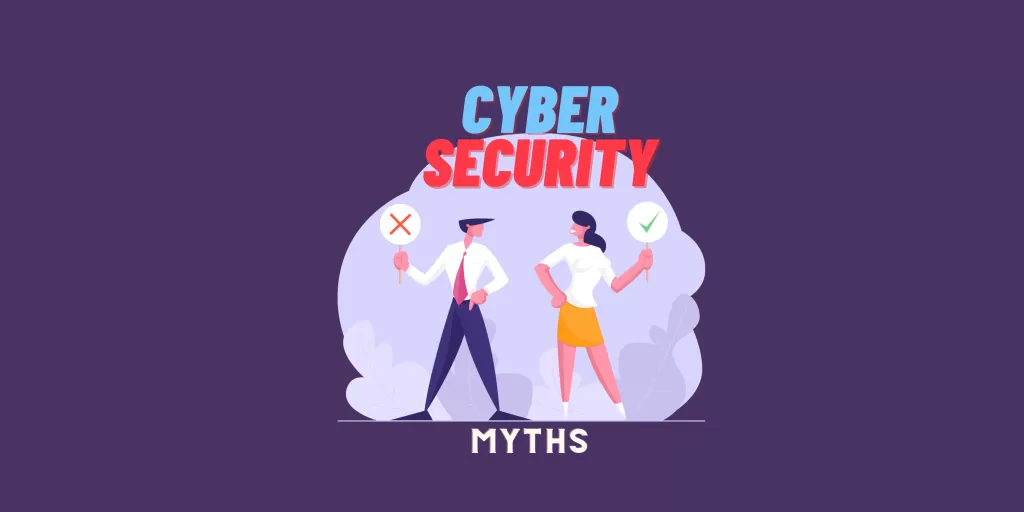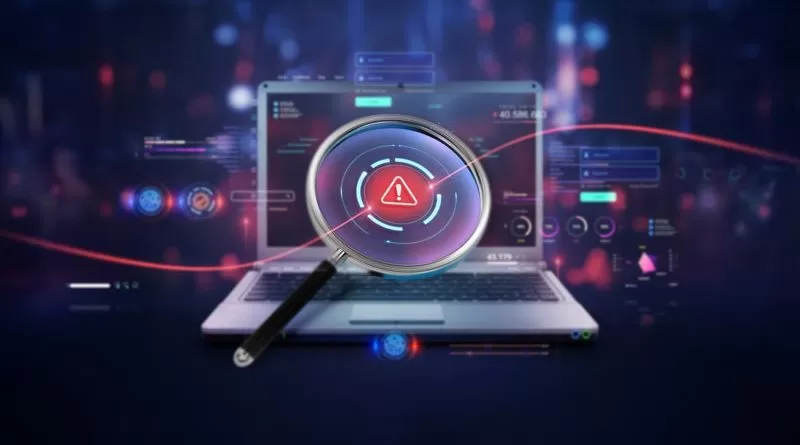Written By:
Scott McAuley
Scott is the IT Director of Texas Management Group, and has been in the IT industry for 25 years.
In the ever-evolving world of cybersecurity, myths and misconceptions abound. But believing these can leave individuals and businesses vulnerable.
That’s why exposing 15 cybersecurity misconceptions is so crucial—it helps separate myths from reality and provides the clarity needed to stay protected.
From the idea that small businesses aren’t targets to misconceptions about antivirus software, understanding the truth behind these myths can strengthen your defenses against cyber threats.
Let’s break down the 15 most common cybersecurity myths and uncover the realities behind them!
Key Takeaways
- Strong passwords are important, but multi-factor authentication (MFA) provides extra protection against phishing and social engineering attacks.
- Small businesses are frequent cyberattack targets due to weaker defenses, emphasizing the need for proper security measures.
- Antivirus software alone isn’t enough, as evolving malware requires safe browsing practices and frequent software updates.
- Public Wi-Fi, even with a password, isn’t safe without using a VPN to protect sensitive information from potential hackers.
- Ignoring software updates leaves systems vulnerable, as updates often include essential security patches to prevent known threats.
Table of Contents
15 Common Cybersecurity Misconceptions and Their Realities

Cybersecurity can seem intimidating, and it’s easy to get lost in the myths. Many misconceptions do more harm than good, often making people vulnerable.
Let’s break down 15 common cybersecurity misconceptions and reveal the truth behind them:
Misconception 1: Strong Passwords Are Enough for Security
Strong passwords are important, but they’re not foolproof. Hackers use techniques like phishing and social engineering to bypass even the strongest passwords.
Multi-factor authentication (MFA) provides an additional layer of defense. In fact, 74% of breaches involve a human element (Verizon, 2023).
Actionable Tip: Enable MFA for all your important accounts to add an extra layer of security.
Misconception 2: Only Big Companies Are Targeted
Many believe that only big corporations are targeted by cybercriminals, but small businesses and individuals are also at risk. Attackers often prefer smaller targets due to weaker defenses.
According to the National Cyber Security Alliance, 43% of cyberattacks target small businesses.
Actionable Tip: Small businesses should invest in basic security measures, such as firewalls and employee training.
Misconception 3: Antivirus Software Protects Against Everything
Antivirus software helps, but it is not a silver bullet. Malware evolves constantly, and antivirus programs can’t catch everything.
Over 560,000 new pieces of malware are detected daily (AV-TEST Institute), so it’s crucial to also practice safe browsing and keep software updated.
Actionable Tip: Keep all your software and operating systems updated to avoid vulnerabilities.
Misconception 4: Public Wi-Fi Is Safe with a Password
Just because a public Wi-Fi network has a password doesn’t mean it’s safe. Hackers can intercept data on these networks, so using a VPN is essential for protecting sensitive information.
Actionable Tip: Avoid accessing sensitive accounts on public Wi-Fi without using a VPN.
Misconception 5: Cybersecurity Threats Are Easy to Spot
Cyberattacks often fly under the radar. Phishing emails can look genuine, and malware can run silently in the background. Awareness and skepticism are key to recognizing and avoiding these threats.
The FBI’s 2022 Internet Crime Report noted that phishing remains the most common type of cybercrime, with over 300,000 complaints annually.
Actionable Tip: Always verify the sender’s identity before clicking links or downloading attachments.
Misconception 6: Macs Are Immune to Viruses
Macs are not invincible. They are less targeted than Windows systems, but they are still susceptible to viruses and malware.
Malware targeting macOS increased by 31% in 2023 (Malwarebytes), proving that Mac users also need security measures.
Actionable Tip: Install reputable antivirus software on your Mac and keep it updated.
Misconception 7: My Data Is Not Valuable to Hackers
Every piece of data has value. Personal information can be sold on the dark web or used for identity theft.
The average cost of personal information on the dark web ranges from $1 to $10 per record, which makes even seemingly insignificant data attractive to attackers.
Actionable Tip: Use strong, unique passwords for every account and avoid oversharing personal information online.
Misconception 8: Updates Are Just for Features
Ignoring software updates is a major security risk. Updates often contain important security patches that protect against vulnerabilities. Failing to update leaves systems exposed to known threats.
According to Microsoft, 99.9% of vulnerabilities exploited in 2023 were more than a year old.
Actionable Tip: Enable automatic updates for all your software to ensure you’re always protected.
Misconception 9: Firewalls Alone Can Keep You Safe
Firewalls are a great line of defense, but they are not invincible. Hackers can still find ways around firewalls, especially if other security measures aren’t in place.
Layered security, combining multiple defenses, is recommended by the Center for Internet Security (CIS).
Actionable Tip: Use multiple security measures, such as antivirus software, MFA, and employee training.
Misconception 10: You Don’t Need a Backup if You Have Antivirus
Antivirus software won’t protect against accidental deletion or ransomware that locks files. Regular backups ensure you can recover your data if something goes wrong, regardless of the cause.
A report by Veeam found that 40% of businesses experienced data loss due to ransomware, highlighting the need for a reliable backup strategy.
Actionable Tip: Set up automatic, frequent backups of your important data to prevent loss.
Misconception 11: Using Incognito Mode Keeps You Anonymous
Incognito mode prevents browsing history from being saved locally but doesn’t hide your online activity from your ISP or websites. For real anonymity, privacy-focused tools like VPNs or Tor are needed.
A study by DuckDuckGo found that 76% of users mistakenly believed incognito mode offered complete privacy.
Actionable Tip: Use a VPN if you need to browse anonymously.
Misconception 12: Employees Are Not a Threat
Insider threats are real. Employees, whether intentionally or accidentally, can compromise security. Regular training and clear policies help minimize risks posed by internal users.
The Ponemon Institute reported that insider threats accounted for 25% of data breaches in 2023, making employee awareness and training vital.
Actionable Tip: Conduct regular cybersecurity training sessions for all employees.
Misconception 13: Hackers Only Target Financial Data
Hackers don’t just seek financial data; they also target personal information, intellectual property, and login credentials. All types of data can be exploited or sold, making everything a target.
According to IBM’s Cost of a Data Breach Report, healthcare data and intellectual property are highly valuable on the black market.
Actionable Tip: Protect all data types with encryption and access controls.
Misconception 14: Cybersecurity Is Too Complicated for Individuals
Cybersecurity may seem overwhelming, but taking small steps—like using unique passwords and enabling MFA—goes a long way. Even basic measures significantly reduce the risk of falling victim to an attack.
The Cyber Readiness Institute found that 90% of successful cyberattacks could have been prevented with basic cybersecurity practices.
Actionable Tip: Start with simple measures like using a password manager and enabling MFA on all accounts.
Misconception 15: IoT Devices Are Secure by Default
Internet of Things (IoT) devices are often shipped with weak security settings. Without changing default passwords or updating firmware, these devices can become easy entry points for attackers.
The 2023 IoT Security Report noted that 60% of IoT devices are vulnerable to medium or high-severity attacks due to outdated firmware or weak passwords.
Actionable Tip: Change the default password of any IoT device you set up and keep firmware updated.
Conclusion
In a world where cyber threats are constantly evolving, debunking cybersecurity myths is crucial for staying protected. Understanding the realities behind these misconceptions helps strengthen your defenses.
From the misconception that strong passwords are enough to the myth that small businesses aren’t targets, knowing the truth can lead to smarter security decisions.
Start by adopting basic measures like multi-factor authentication and regular software updates to improve your protection.
Cybersecurity is everyone’s responsibility—staying informed and proactive is key. Take action today and safeguard your digital presence against potential threats.
Let’s continue the conversation and ensure we’re all better prepared.
Don’t Let Cybersecurity Myths Leave Your Business Exposed
Explore our blogs for accurate information and expert advice to strengthen your defenses. Ready for a proactive approach? See how our managed cybersecurity services can provide tailored, 24/7 protection for your business.
Stay one step ahead—schedule a free assessment today and ensure your company’s security is built on facts, not fiction!
FAQ
What are Some Common Myths About Cybersecurity Threats?
Common myths include “only big companies are targeted” and “antivirus software alone is enough protection.”
How Can Misconceptions About Cybersecurity Lead to Increased Risks?
Misconceptions can create a false sense of security, leaving gaps in protection and making users more vulnerable.
What Steps Can Individuals Take to Educate Themselves About Cybersecurity?
Individuals can stay informed through cybersecurity courses, reading trusted resources, and practicing safe online habits.
How Do Cybersecurity Misconceptions Differ Between Businesses and Individuals?
Businesses may underestimate insider threats, while individuals often believe they’re too small to be targeted by hackers.






